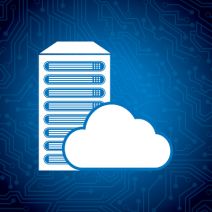Argentum IT LLC Blog
77% of Businesses Virtualize Their IT In Some Capacity, What About You?
 Technology solutions for small and medium-sized businesses can be complex, which is why simplification is at the top of a lot of executives’ priorities. To this end, virtualization is a key component, helping organizations make their IT easier to manage. What effect does this have on data security?
Technology solutions for small and medium-sized businesses can be complex, which is why simplification is at the top of a lot of executives’ priorities. To this end, virtualization is a key component, helping organizations make their IT easier to manage. What effect does this have on data security?
Even though virtualization offers a significant benefit, we realize that some businesses might not be completely aware of how virtualization works. As defined by Gartner, virtualization is:
[...] the abstraction of IT resources that masks the physical nature and boundaries of those resources from resource users. An IT resource can be a server, a client, storage, networks, applications or OSs. Essentially, any IT building block can potentially be abstracted from resource users.
For example, a virtual network would be hosted in a data center environment and deployed via the cloud, making access easier without all of the complicated wiring. Adding users becomes much easier, as they don’t require specific cabling projects for adding new connections, making scalability an ideal feature. Virtualization services are so popular that, according to a report from Cisco, 77 percent of small and medium-sized businesses are using some kind of virtualization, be it for storage, server hosting, or desktop infrastructure.
Introducing virtualization to your IT infrastructure has several benefits. The main one, which we previously mentioned, is that your infrastructure will be simplified, meaning that you won’t have to manage as much hardware. This means that you won’t be as susceptible to threats like hardware failure or natural disasters, provided your virtual infrastructure is hosted off-site.
Another benefit is cost savings that stem from decreased operational costs. Naturally, if you’re running fewer workstations or servers, you’ll be consuming less electricity, and if you’re running a virtual desktop infrastructure, you can administer maintenance much more effectively.
Of course, nothing is as simple as it seems. A virtualized network still needs to have measures put in place to halt the advance of threats of all types. Although virtualizing a network does go a significant distance in separating your system from some threats (primarily that of hardware failure), there’s always going to be a chance that threats slip past your defenses. This is why it’s important to always be using the latest security solutions, like powerful antivirus, firewall, spam blocking, and content filtering, to minimize the risk of your virtualized network.
In conclusion, your organization’s entire virtual desktop infrastructure needs to be designed with security and uptime in mind, not just to minimize the amount of hardware your organization needs to stay productive.
For more information about virtualization services and security, give Argentum IT a call at (502) 473-6407.

Comments